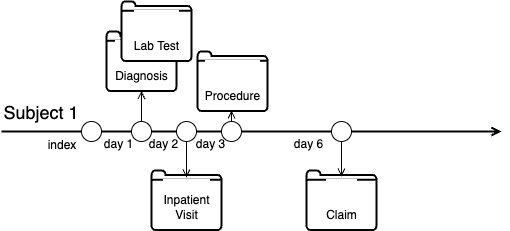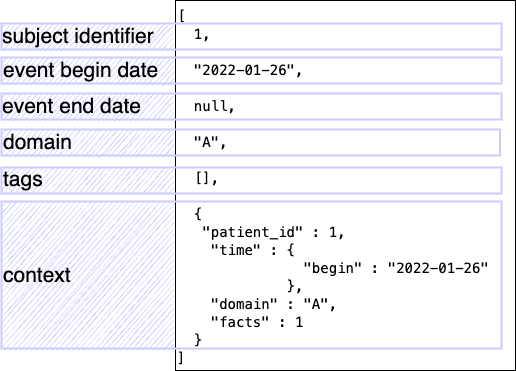Introduction to event-data-model
These documents describe the libraries and applications in the event-data-model repository.
The event-data-model repo contains the following tools:
In addition,
event-data-model serves as a storage repo for shared dhall files
that contain information on the shape of project data models.
These files are located in the fact-models repository.
More information about each tool may be found below.
Introduction to Event Data Theory
To understand event data models, it is helpful to have an understanding of event data theory. Event data theory is rooted in epidemiology study design, where time is an essential element. Often a study defines an index, which is the start of a subject’s observational timeline. Outcomes of interest are pinned to this timeline, along with additional data needed for analysis. What occurred and when that what occurred to a specific who define an event.

The event JSON schema aims to makes epidemiological reasoning easier by representing data in a who, when, what format. Below is an example of the event JSON schema.

The who and when are defined at the top level of the JSON schema,
along with domain and tags.
domain refers to the top-level variant of the model,
which is defined in fact-models.
tags are conveniences that allow user to summarize information to the top-level of the schema.
The complete what information is contained in the context.
Again, as a convenience, the who and when information is repeated,
along with the domain.
The facts section of the event JSON schema contains the meat of the what information of the event.
The collection of all possible facts in the event JSON schema is the called the data model.
More information about the specific implementation of a Fact
and a Model in event-data-theory may be found in the theory section.